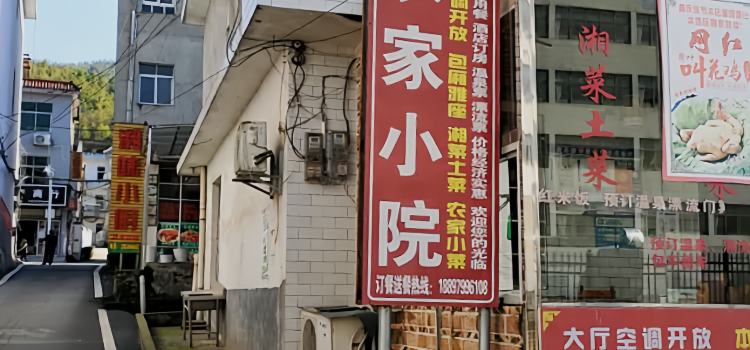农家小院饭店
4/57 Reviews
£4

Open Now|08:00-21:00
13155966651
What travelers say:

The environment can't be so tall, but the raw materials are praised
More
Reviews of 农家小院饭店
Some reviews may have been translated by Google Translate
4/5Excellent
All (7)
Latest
Photo reviews (1)
Positive reviews (2)
Negative reviews (1)
The environment is not as high-end as that, but the raw materials are great
I really like the vegetables in this restaurant, they are sweet and fresh, the vegetables from the mountains are delicious. The diving fish is also very fresh, it is worth a try.
The food tastes good, the environment is clean and tidy, and the service attitude is quite good
In recent years, farmhouse courtyard restaurants have become the new favorite in the catering market with their unique "earthy aesthetics" and immersive experience, but they also face reputation differentiation and operational challenges. The following comments are made from the perspectives of environment, dishes, positioning and controversial points: ### 1. **Environment and scene creation: immersive "earthy aesthetics"** Farmhouse courtyards are mostly located in the suburbs or ancient houses, creating a return to nature atmosphere through themed landscaping. For example, Chaimen in Xixiang, Hunan, transformed a 140-year-old house into a restaurant, retaining mottled brick walls, wood stoves and open kitchens. Customers can witness the whole process of picking, killing and cooking ingredients, supplemented by the display of old objects and nostalgic music, forming a "market-like" scene, which not only satisfies urban people's yearning for nature, but also takes into account cultural experience. Similar cases include Lao Xujia Fish Market, which moved the fishing village indoors and restored the fishing port style with fishing boats, fishing nets and other elements. ### 2. **Features of dishes: premium strategy combining freshness and local customs** The main selling point is "original ecology". For example, Wangba Yard uses a wood stove for cooking, and the daily menu is adjusted according to the self-grown ingredients. Customers need to go to the kitchen to "see the dishes and order them". Vegetables, bacon and other ingredients are directly displayed to enhance the sense of freshness. The prices of dishes are generally high (100-200 yuan per person). For example, Xixiang Chaimen targets high-end customers, and the per capita consumption in fourth-tier cities reaches 200 yuan, which still attracts luxury cars. However, some consumers also complain that some dishes are salty or oily, and the cost performance is questionable. ### 3. **Positioning and customer base: filling the gap in the mid-to-high-end market** Traditional farmhouses have declined due to extensive management, and high-end clubs are too restrained. Farmhouse courtyards fill the gap with a refined route of "earthy but not low". Its target customer base is the middle class who pursue health and nostalgia. For example, Wangba Yard in Changsha needs to make an appointment in advance, otherwise it will be hard to find a seat. Some stores form a premium through "landscape + high pricing", such as Shandong "Old Street Impression" with a monthly revenue of 1.5 million yuan. ### 4. **Controversy and Challenges: Homogeneity and Copying Difficulties** Although the model is novel, problems are gradually emerging: - **High Investment and Difficulty in Copying**: The cost of a single store is high (e.g., Wang Ba Yuanzi Changsha store invested 8 million yuan), and it relies on fresh cooking, which is difficult to scale. - **Homogeneous Competition**: A large number of imitators have emerged in Zhuzhou, Hunan and other places, resulting in similar scenes. Some customers only check in once and have a low repurchase rate. - **Copycat Chaos**: For example, the Wuhan "Farmer's Courtyard" brand has been counterfeited in many places, causing brand disputes. ### Summary Farmer's Courtyard Restaurant has successfully broken through through the "scene + ingredients" differentiation strategy and become a new blue ocean in the catering industry, but its long-term development needs to solve the problem of balancing standardization and innovation and upgrading. When choosing, consumers can give priority to brands with clear themes and transparent ingredients, and at the same time look at premiums rationally to avoid overpaying for the "Internet celebrity label".
The taste is OK. The vegetables are good.